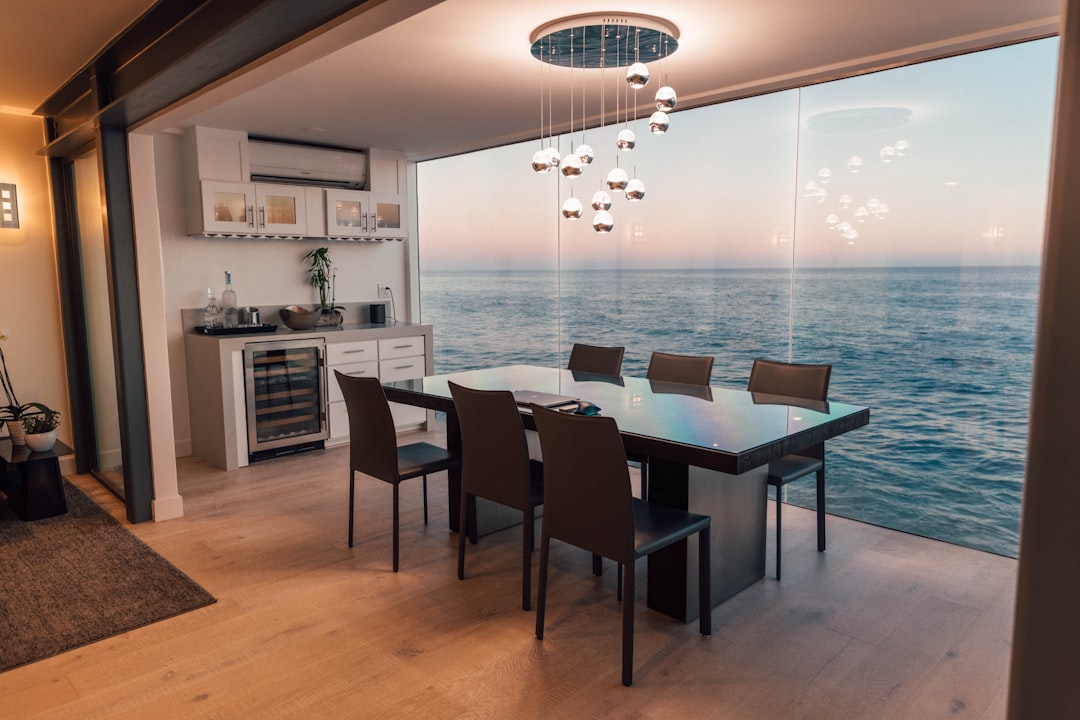The world of interior design is changing fast. Over 300,000 professionals work in the United States alone. With more people needing skilled designers, online learning has become key. It lets aspiring designers learn without the limits of traditional classrooms.
We’re excited to share our guide to the best online interior design schools. This guide helps students choose the right path in this creative field. It shows the benefits and chances online learning offers, helping you start a fulfilling career in interior design.
Key Takeaways
- Discover the top online interior design schools that can help you achieve your career goals.
- Learn about the benefits of online interior design education and how it can enhance your skills.
- Understand the key factors to consider when choosing an online interior design program.
- Explore the various career paths available to interior design professionals.
- Get insights into the future of interior design education and the role of online learning.
Understanding the Importance of Interior Design Education
Interior design education is key for those starting their design careers. The field is always changing, needing education that covers both theory and practice. Designers must keep up with new tech and trends to stay ahead.
Benefits of Online Learning
Online interior design classes offer many perks, like flexibility and easy access. Students can learn from anywhere, anytime, with just internet. This is great for those with busy lives.
Key advantages of online learning include:
- Flexibility in scheduling
- Access to a wider range of courses and programs
- The ability to learn at one’s own pace
- Reduced costs associated with commuting and accommodation
Key Skills Acquired in Interior Design Programs
Accredited online interior design programs teach essential skills for a design career. These include:
- Understanding of design principles and elements
- Space planning and visualization techniques
- Knowledge of color theory and textiles
- Familiarity with design software and technologies
With these skills, online design program graduates are ready for the industry. They can create innovative, functional designs.
Overview of the Top Online Interior Design Schools
Exploring the top online interior design schools reveals their unique strengths. The best courses offer a full education in interior design. They cover both the theory and practical skills needed.
School Profiles
Top virtual interior design schools have diverse programs for different goals. Some focus on sustainable design, while others emphasize technical skills like CAD.
These schools have experienced teachers who bring real-world knowledge to the classroom. By looking at school profiles, students can find the right program for their career.
Course Offerings
The best online interior design courses cover a wide range of subjects. Students learn about color theory, spatial planning, and design history. They also get to explore specialized topics.
Many programs offer electives in areas like universal design and historic preservation. This lets students focus on what interests them most.
Accreditation and Recognition
Accreditation is key when choosing an online interior design school. Look for programs accredited by well-known agencies. This ensures the education meets industry standards.
Recognition from groups like the National Association of Schools of Art and Design (NASAD) or the Council for Interior Design Accreditation (CIDA) is also important. Always check if a program is accredited.
Essential Features to Consider in an Online Program
Choosing an online interior design program requires looking at several key features. These features can greatly affect your learning experience. Understanding them can help you make a smart choice.
Flexibility and Scheduling
Online interior design programs offer a big plus: flexibility. Flexible scheduling lets you study at times that work for you, even if you have other commitments. Look for programs with asynchronous courses, so you can learn on your own time.
Also, check if programs have multiple start dates. This means you can start when it’s best for you. This is great for those starting a new career or improving their skills without stopping their life.
Faculty Experience
The experience of the faculty is key in a good online interior design program. Experienced instructors share their real-world knowledge and guide you. Research the faculty’s backgrounds and specialties when looking at programs.
Teachers with industry ties can also help you network and find jobs after graduation. This is crucial in interior design, where connections can open doors to work and collaborations.
Technology and Resources
The technology and resources of an online program are vital for your learning. State-of-the-art software and tools are needed to learn practical skills. Make sure the program offers access to industry-standard design software and other resources.
Also, think about the technical support the program offers. Good support can solve any tech problems, keeping your learning smooth. This support might include online tutorials, live chat, or dedicated help desks.
Curriculum Highlights in Interior Design
Understanding the curriculum of online interior design programs is key for those considering a degree. The curriculum is made to give a full education in interior design. It covers both the theory and the practical side of design.
Core Courses and Electives
Online interior design programs have core courses and electives. Core courses teach the basics like design principles, color theory, and space planning. Electives let students dive deeper into areas like sustainable design or kitchen and bath design.
For example, a course on sustainable design practices might focus on green materials and energy-saving systems.
As an expert in interior design says, “A good curriculum should mix theory with practical skills. This prepares students for real-world challenges.” (
Designing Spaces: The Essentials of Interior Design
by
).
Project-Based Learning
Project-based learning is a big part of online interior design education. Students work on real projects that mimic real-world design challenges. This helps them build a portfolio and gain hands-on experience.
Students might work on projects like designing living spaces for clients or creating sustainable designs. This way, they can apply what they’ve learned to solve real problems.
Virtual Design Tools
Online interior design programs use virtual design tools to teach. These tools include software for drafting, 3D modeling, and virtual reality. Knowing how to use these tools is crucial for success in the field.
| Tool | Description | Application |
|---|---|---|
| AutoCAD | Computer-aided design software for drafting and technical drawing. | Used for creating precise floor plans and technical documents. |
| SketchUp | 3D modeling software for conceptualizing and visualizing designs. | Applied in creating 3D models of spaces and objects. |
| Virtual Reality (VR) Tools | Immersive technology for experiencing designs in a virtual environment. | Utilized for presenting designs to clients and stakeholders. |
For more info on online interior design courses, check out Cozy Nest Plans. They provide insights into different programs and their curricula.
Career Opportunities for Interior Design Graduates
The field of interior design is changing fast. Online interior design graduates are ready to take advantage of new trends. With more people needing skilled designers, there are many job opportunities.
Job Roles and Responsibilities
Interior design graduates can find jobs in many areas. They can work on homes or commercial spaces. Here are some common jobs:
- Residential Interior Designer: Making homes look good and work well.
- Commercial Interior Designer: Improving office and retail spaces.
- Sustainable Design Specialist: Using green materials to help the planet.
- Design Consultant: Giving advice on colors, furniture, and lighting.
These jobs require good communication and project management. Being able to manage projects well is key to success.
Salary Expectations
How much interior designers make varies. It depends on where they work, their experience, and their job. In the U.S., the average salary is about $60,000 a year. But, salaries can go from $40,000 for beginners to over $100,000 for experienced designers.
Industry Trends
The interior design world is shaped by new tech, green living, and what people want. Some big trends are:
- Sustainable Design: Using materials and systems that are good for the planet.
- Virtual Design Tools: Using digital tools for designing and managing projects.
- Wellness-Oriented Design: Creating spaces that are healthy and good for people.
By knowing these trends, interior design graduates can stand out. As we look at online interior design education, it’s clear graduates are ready for new chances.
How to Choose the Right Interior Design School for You
There are many online interior design programs to choose from. It’s important to pick the right one for you. Look at several key factors to make a good choice.
Factors to Evaluate
First, check if the program is accredited. This is important for getting certified or licensed later. Also, make sure the curriculum covers all the skills you need.
Look at the faculty’s expertise too. Good instructors can really help your learning. Also, see what support services the school offers.

Your Personal Learning Style
It’s important to know how you learn best. Some people do well in self-paced environments, while others need a structured schedule. Think about whether you like working alone or need to talk to others.
Also, think about what kind of learning materials you like. Do you prefer videos, interactive simulations, or written texts? Make sure the program offers what you need.
Financial Considerations
Money matters when choosing a program. Look at the tuition fees and see what financial aid is available. Don’t forget about any extra costs for software, equipment, or materials.
Think about the return on investment too. Check out the career outcomes and salaries for graduates. This will help you see if the program is worth it.
Real Student Experiences and Testimonials
Students share their stories about online interior design education. Their experiences show how well virtual schools and distance learning work.
Success Stories
Many students have found great success online. One student balanced school with a job and got a promotion. She said using what she learned in real projects was key.
Another student loved the supportive online community. “The forums and discussion groups were invaluable,” he said. “They let us share ideas and get feedback.”
Challenges Faced
Students face challenges too. Technical issues like connectivity problems were common. But, they said the support team was always there to help.
Staying motivated and disciplined was hard without a classroom. But, setting a schedule helped one student stay on track.
Advice for Future Students
Students who’ve gone through online programs have advice. “Be proactive in your learning,” one said. “Use all the resources available, like virtual labs and tutoring.”
Another student suggested building a strong network. “The connections I made were crucial for my career,” they said.
Looking at what current and former students say helps future students. Their stories show how online interior design education can change lives and careers.
Cost of Online Interior Design Programs
Thinking about online interior design programs? It’s key to look at the costs and aid options. Knowing the financial side helps you choose wisely.
Tuition Fees and Financial Aid
Tuition for online interior design programs varies a lot. It can be from $10,000 to $30,000 or more for the whole program. Financial aid like scholarships, grants, and loans is available. To find affordable online interior design degrees, check these out.
- Federal and private student loans
- Institutional scholarships and grants
- External scholarships and fellowships
It’s important to fill out the Free Application for Federal Student Aid (FAFSA) to see if you qualify for aid.
Additional Expenses
There are more costs to think about for an online interior design degree. These include:
- Software and technology fees
- Course materials and supplies
- Optional internship or practicum fees
These expenses can add up. But, many programs offer payment plans or include these costs in the tuition.
Return on Investment
Investing in an online interior design certificate program or degree can really boost your career. You can become an interior designer, design consultant, or space planner. The return on investment should be considered, looking at job rates and starting salaries.
By looking at costs and potential benefits, you can make a smart choice about online interior design programs.
The Future of Interior Design Education Online
Online interior design education is growing fast. Top schools are using new tech to make learning fun and interactive. This change is exciting for the future of design.
Shaping the Industry
New trends like sustainable design and wellness spaces are being taught online. This prepares students for the changing design world. They’ll be ready to meet new industry needs.
Innovative Technologies
Virtual and augmented reality are making learning better. Students can dive into design concepts in new ways. It’s a more engaging and effective learning experience.
Continuing Education
There’s a big push for ongoing learning too. This lets pros keep up with design trends and tech. We’ll see even more creative ways to teach online design, boosting the reputation of top schools.



